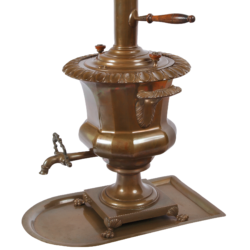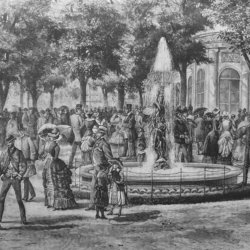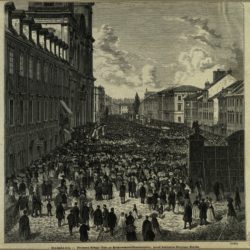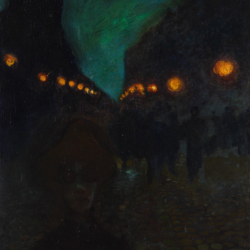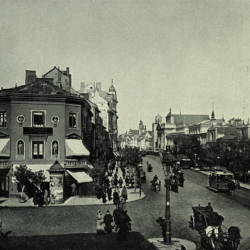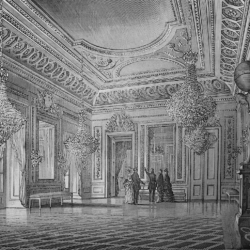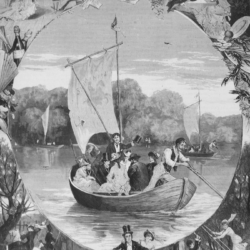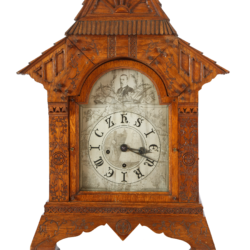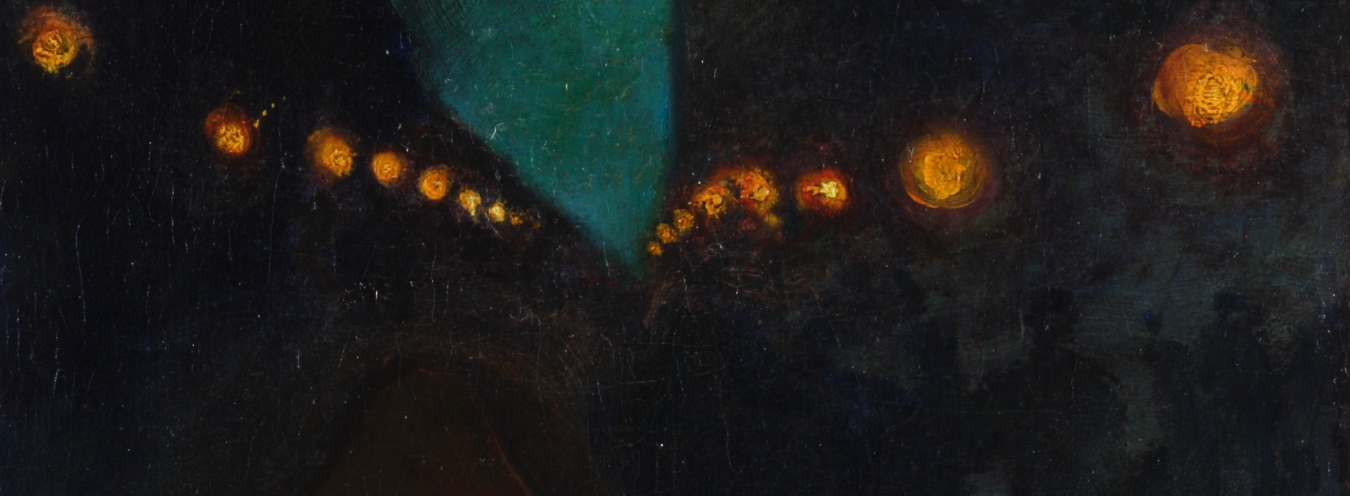
The view from the city level (social aspect)
In his work on Sienkiewicz’s journalistic activity,[1] Ferdynand Hoesick categorized the texts according to the subject and to the place of their publication. Julian Krzyżanowski pointed out that apart from the categories such as “Life and customs of Warsaw” and “Paintings and sculpture,” reviews should also be considered as a separate body of texts.[2] Leaving aside the analysis of these reviews or texts devoted strictly to artistic events, what is worth noting, however, are the elements of the descriptions of cultural events that draw the image of public space, show the way it was experienced, and illustrate the customs activated in a given spatial context (a leaking roof in the theater, a crowded ballroom, or commotion in the cloakroom at the concert hall, as well as the spatial and thematic division of conversations, locating the gossiping in the halls on the first floor, beyond the area of informal, polite conversations on the ground floor, e.g.: the author wrote about the ball in the City Hall: “downstairs people were socializing – upstairs they were sweating and gossiping”[3]).
In spite of the strict genre requirements and editorial guidelines concerning their size and subject, the journalistic texts exhibit a considerable dose of “literary character.” Thanks to Sienkiewicz’s ironic and humorous comments, critical remarks, and intertextuality, not only physical but also imaginary space emerges from the reported information. The function of the columns turned out to be dynamic. While treated by Sienkiewicz as “current” or “present,” and perceived by Hoesick in 1902 as “forgotten”[4] – after almost one hundred and fifty years, they are, after all, a valuable testimony of the times and a record of the social reality of Warsaw in the late 19th century. The columns not only reconstruct and report facts but also create an image of both the real and cultural dimension of the city as well as of its mentality, customs, and the imagination of its inhabitants, an image in which literary and artistic matters are interwoven with technical, organizational and even sanitary problems. In 1875, Sienkiewicz wrote: “We are the city of the worst cobbled and worst lit streets of all European cities – […] The palaces on main streets neighbor with half-ruined huts – that is a variety for the eye. Dark at night – it is romantic, and dirty during the day – it is original.”[5]
When writing on commissioned topics, concerning the condition of the streets, the need for charity collections, or the necessity to paint houses and wash windows in the spring, Sienkiewicz drew the picture of the inhabitants of the city, appearing in specific spatial realities and experiencing this space. The use of irony and intertextuality point to a specific type of “virtual” reader – an intelligent reader. Roman Zimand noted that “writers, critics, journalists, in a word – ideologists of those years are aware that they are participating in the creation of a new, previously unknown model of culture.”[6] The social context of the contemporary capital is, therefore, an important factor determining the content of Sienkiewicz’s journalistic writings.[7]
The city space is divided into areas where particular social classes are concentrated, including the Jewish poor. In turn, regardless of their place of residence, people “engaged in begging, pretending to be merchants” occupy the most frequented streets (Sienkiewicz sketches a picture of these figures: a girl crying for twelve hours straight while selling calendars, boys forcing people to buy bouquets, women pretending to be poor widows, or immigrants[8]). Beggars specializing in manipulation solicit passers-by in their homes, gardens, restaurants, confectionaries, and on the streets. Old-style beggars (“a pauper with a can”) appear in the vicinity of churches, especially in near the Powązki Cemetery, while thieves become active during mass events. There is a clear division of the city into areas inhabited by groups of a given social status; this factor also determines the emergence of areas in which residents spend their free time (e.g. the upper classes rest, as we know, in the Łazienki Park and the neighboring Botanical Garden, while working-class families visit Saska Kępa neighborhood for this purpose; business lunches are eaten, depending on the social status, in restaurants in Angielski Hotel on Wierzbowa Street or in Europejski Hotel). Inferior streets are built up with wooden houses, which are prone to catching fire. As a result, the city is divided into brick and wooden districts.
Przypisy
- See F. Hoesick, op. cit.
- J. Krzyżanowski, Sienkiewicz a Warszawa [Sienkiewicz and Warsaw], 1975, p. 26. Due to the subject of my paper, Sienkiewicz’s reviews and texts devoted strictly to artistic matters have not been analyzed here. I would like to note, however, that the topic of artistic space being the subject of Sienkiewicz’s attention (not only of whole texts but also of selected fragments of chronicles) is a separate issue. The issue of the range of mental space, which in the field of artistic activity – due to the European context – emerges as a component of larger structures.
- H. Sienkiewicz, Dzieła [Collected Works], vol. 48, p. 29.
- F. Hoesick, op. cit., pp. ii–iii.
- H. Sienkiewicz, Dzieła [Collected Works], vol. 48, pp. 127–128.
- R. Zimand, Dekadentyzm warszawski [Warsaw Decadence], Warsaw 1964, p. 91.
- For accounts of the social structure of Warsaw of the times (statistics regarding the population and social groups), see among others M. M. Drozdowski, op. cit.; M. Nietyksza, Ludność Warszawy na przełomie XIX i XX wieku [The population of Warsaw at the turn of the 20th century], Warsaw 1971; R. Zimand, op. cit.
- H. Sienkiewicz, Dzieła [Collected Works], vol. 1, pp. 108–111.


